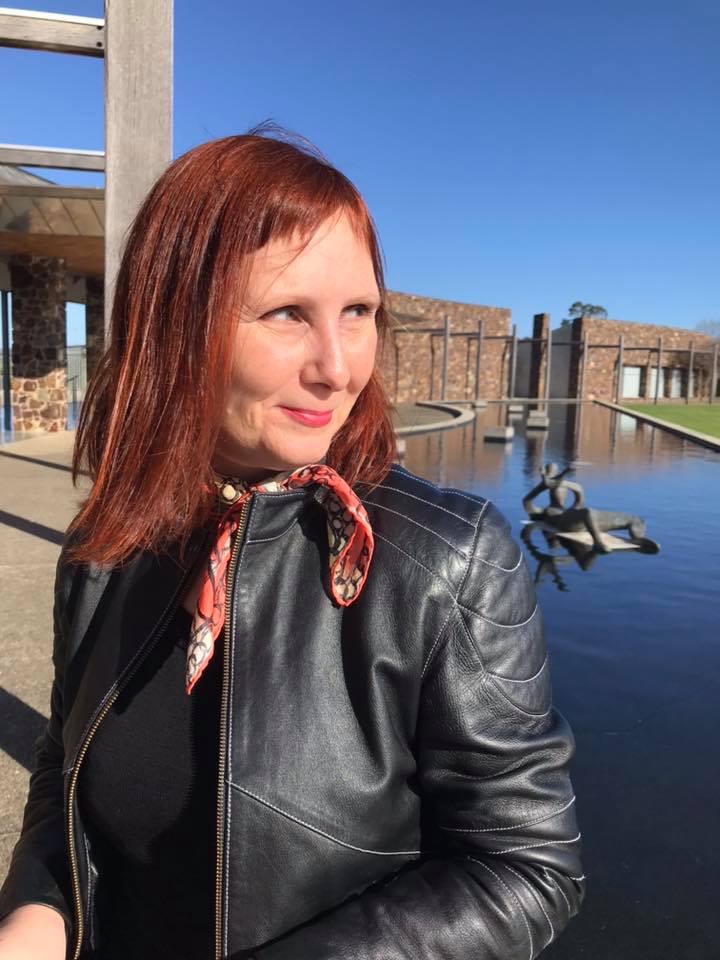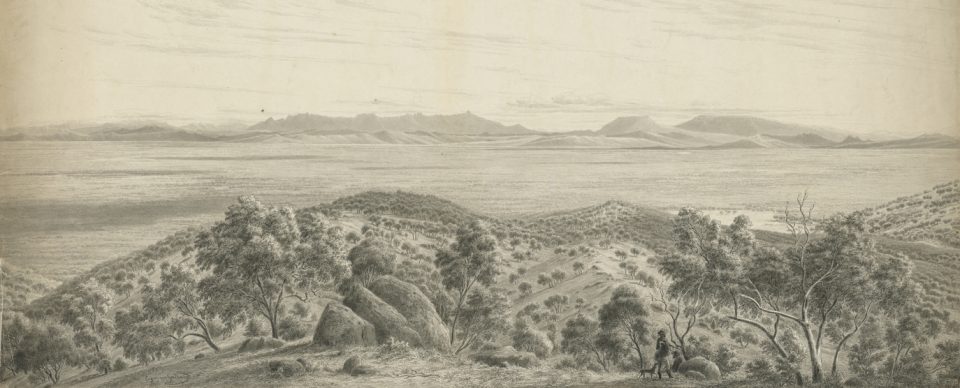Welcome to Life on Spring Creek
I would like begin by acknowledging the traditional custodians of the land in and around Beechworth. I extend my respect to their elders, past and present, and to their ancestors. I also extend my respect to any Aboriginal and Torres Strait Islander readers of this website.
In November 1852, around 8000 people from around the globe rushed to the banks of Spring Creek (Beechworth) to dig for gold. Almost overnight, the Creek was transformed. Along its banks grew-up something resembling an overcrowded refugee camp, surrounded by its very own man-made disaster zone but with a festive atmosphere.
The gold rush displaced fourteen years of European pastoral invasion and expansion, which led to the dispossession of the traditional owners, North East Victoria’s Aboriginal peoples, from their lands.
This blog started out as an exploration of how life was lived exactly where I am living right now — on the banks of Spring Creek (now sometimes called Silver Creek) in Beechworth, North East Victoria — but 166 years ago. It was initially, part gold-rush-lifestyle guide (and living-history laboratory), part myth-buster. Life on Spring Creek asked what it was about life on the gold diggings that made ‘those who lived it… nostalgic for it ever after’?
The gold rushes of the late 1840s (in California) and the early 1850s (in Victoria) were one of the biggest (in modern parlance) do-it-yourself, off-grid, low-tech adventures of all time. People of all backgrounds were drawn to the gold fields by the prospect of riches and adventure, but they also learned self-sufficiency, and found freedom of expression. They built their own dwellings, and filled them with make-shift furniture. They learned to recycle and up-cycle. They even adopted some of the practices of the local indigenous peoples, who must have looked at their activities in bewilderment. The gold rushes were also a time in which social norms were up-ended: Rich people lost their servants. Men learned to cook and mend. People of different cultures and races lived side-by-side. And anyone with lady luck on their side could strike it rich.
While the gold rush remains a fascinating historical period, Life on Spring Creek has begun to delve deeper into the lives and history of local Aboriginal peoples: who they were, how they lived, and the ways in which their lives intersected (often disastrously, but in complex ways) with European pastoralism and the gold rush.
About Jacqui Durrant
The opening line of L.P. Hartley’s The Go-Between — ‘The past is a foreign country: they do things differently there.’ — has become proverbial. Most of us hold a degree of fascination with some aspect of the past, not least because the people who lived there are at once familiar to us, and unfamiliar. While nothing is easier than slipping into the comfortable assumption that people from the past thought and felt just as we do today, as historian Robert Darnton pointed out, the job of a good historian is to show us ‘not merely what people thought but how they thought — how they construed the world, invested it with meaning, and infused it with emotion.’ This is the essence of the cultural history practice which I endeavour to bring to every project.
I hold an ‘official degree of fascination’ with the past, in the form of PhD in Cultural History from La Trobe University (2005). I bring a broad historical knowledge, strong research and writing skills, and a capacity for critical reflection, to any history project.
My research often trespasses into fields I studied in my undergraduate degree (B.App.Sc 1stHons, Charles Sturt University) — namely Aboriginal Studies, Australian Archaeology, Anthropology, and Ecology. I like for my writing to be as interdisciplinary as possible.
These days I am also a full professional member of the Professional Historians Association (Victoria), and subscribe to their standards and code of ethics. I currently have a solid Level 2 range of experience.
I have experience in writing gold rush history; local history; migrant and Aboriginal/non-Aboriginal contact history; researching historic objects, places and landscapes; and art history.
I also have had the occasional stint teaching at La Trobe University, including running the workshops for Introduction to Aboriginal Australia in 2017, and tutoring in Colonial Australia, Australian Heritage Sites and Landscapes and even American History.
My own cultural background is Irish tinker, English and Scots heritage.

Why do I think history is important?
One of my favourite historians, Inga Clendinnen put it best (in her brilliant book Dancing with Strangers): ‘we humans proceed in a fog. By coming to see the fogs through which people in other times battled in the direction they hoped was forward, we may better be able to recognise and penetrate our own.’
And for the very curious…
I trained at La Trobe University under the supervision of Alan Frost, a myth-busting historian with phenomenal research skills and a poetic outlook, who is a specialist in the 18th century exploration of the Pacific and the early colonisation of Australia. I was co-supervised by Richard Broome, a specialist (some would say, a giant!) in Aboriginal history. La Trobe was also renowned as the epicentre of the ‘Melbourne group’ of ethnographic historians, revolving around the work of New York Times ‘book of the year’ winner Inga Clendinnen, Pulitzer prize winner Rhys Isaac and the phenomenal Greg Dening. All five historians have left an indelible mark on my approach to history.
They were not interested in creating simplistic, hindsighted views of the past. Instead, each attempted in their own way (as Dening once said), ‘to return to the past the past’s own present — a present with all the consequences of actions still unknown.’ In creating histories filled with a sense of uncertainty in events as they unfolded, they hoped to ‘reconstruct something of the participants’ worlds as they experienced them.’
Finally, the historian who was most influential on my thinking was my undergraduate Honours Supervisor, Bruce Pennay. He taught me to always look for who was being left out or left behind in the historical discourse. I thank him.
I live in Beechworth, and have a PhD in Australian cultural history. Over the last few years I have been collecting eye-witness accounts of the early gold rush in Beechworth: mainly diaries, letters, newspaper and government reports; mostly written on the spot, or shortly afterwards. It is my intention to base everything in this blog on these primary resource materials, and firsthand experience.

Hi Jacqui. It would be great if you set up a Facebook page dedicated to this blog. That way we would straightaway find your latest blog when you shared a link to it on the page. It is great work and deserves the wider audience social media brings.
LikeLike
PS If you don’t know how to do that I can set one up for you in 10 minutes 🙂
LikeLike
Thanks very much Michael. I will endeavour to do so before my next post, and let you know.
LikeLike
Hi Michael. You can find the Facebook page ‘Life on Spring Creek’ now. Thanks for the encouragement.
LikeLike
Hi Jacqui, Can you email me?
LikeLike
Yes Rod. 🙂
LikeLike
Happened upon this blog – and love it. Do you still have your FB page?
LikeLike
Hi Helen. Yes, there is a Life on Spring Creek facebook page too. Cheers!
LikeLike
Have you explored the actual people that discovered gold in Ovens…I’m related to Andrew Black – brother-in-law to William Howell – who is documented as being in 2 parties that found gold. Andrew was working with David Reid fro 1841 and would like to know of his life – possibly as a storekeeper supplying miners with Reids or just after they left the area in 1853 ????
LikeLike
Hi Lindsay, I haven’t come across Andrew Black before, but if you would like to share what you do know already about him by emailing me (jacqui@jacquidurrant.com), I would be happy to keep and eye out of anything relevant! I haven’t focussed on the gold discovery much, but I do know that gold was maybe first discovered when Reid was building his mill on the Yackandandah Creek.
LikeLike
Hi Jacqui
Could you email me re Beechworth grape and wine history.
LikeLike
jacqui@jacquidurrant.com
LikeLike
Jacqui, have just come across your work on Omeo tribe boundaries that I am still absorbing. After seeing you use my Tambo Crossing article I thought to congratulate you on your work and wondered whether you would be interested in corresponding over a few small matters. Peter
LikeLike
Hi Peter, when I undertook that work, I did not realise it would be posted on line. In any case, I’m happy to correspond. Email: jacqui@jacquidurrant.com
LikeLike
Hi Jacqui, love your work! Rachel
LikeLike